50 AutoCAD Commands You Should Know
Wednesday, November 23, 2016by Nicolás Valencia Source : http://www.archdaily.com/
After spending countless hours in front of AutoCAD working on a project, you’re bound to have your own set of favorite commands to standardize a few steps. We also bet that you don’t have them all memorized or often forget them. To help you remember, we've made a list of 50 commands that can help you speed up your work game, discover new shortcuts, or come in use as a handy tool for when you forget what the command you need is called.
The following listing was developed and corroborated by our team for the 2013, 2014 and 2015 versions ofAutoCAD in English. We also prepared a series of GIFs to visualize some of the trickier ones.
When you’ve finished reading, we would love to know what your favorite commands are (including those that we didn’t include). We will use your input to help us update the article!
AREA
BACKGROUND
BMPOUT
BOX
BURST
CHSPACE
CLOSEALL
COLOR
DIMALIGNED
DIMANGULAR
DIMBASELINE
DIMRADIUS
DIMTEDIT
EDGESURF
EXPLODE
ID
LIGHT
LINETYPE
MATLIB
MLINE
MLEDIT
MULTIPLE
MVSETUP
OOPS
OVERKILL
PAGESETUP
PFACE
PREVIEW
PURGE
QDIM
QLEADER
QSAVE
QSELECT
RECOVER
RENDER
REVOLVE
RULESURF
SAVEALL
SHOWMAT
SKETCH
SPELL
SUBTRACT
TABLET
TIME
U
UNDEFINE
VPORTS
XLINE
3DSOUT

Defines which applications to load when starting / opening AutoCAD. Very useful if AutoCAD and your computer don’t get along so well.
Calculates the area and perimeter of a defined object or a surface that you select vertex by vertex, according to the metric units defined in settings.
Choose a background image for the work area. It can be a single color (Solid), a gradual color (Gradient) or an image (Image) from your computer.
Generates a bitmap image (.bmp format) after selecting a series of objects, surfaces, or regions.
Creates a 3D box, defining height, width and depth.
Explodes a block or an object, but keeps its attributes intact after exploding it. Highly recommended.
Moves objects from the layout to the model, and vice versa. The best part is that the objects are scaled automatically in the new space.
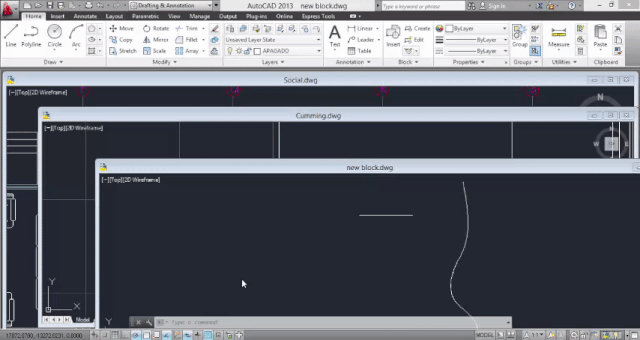
Closes all open AutoCAD windows. If there are changes to any of your files that you haven’t saved yet, you will be asked if you want to save them. Unlike QUIT, you won’t exit AutoCAD with this command, just return to Start.
Choose a layer color for future objects, lines and surfaces.
Creates a dimension aligned with an axis / line.
Creates a dimension aligned with an arc or circle.
Creates a linear, angular or coordinate dimension, starting from a baseline of an earlier dimension.
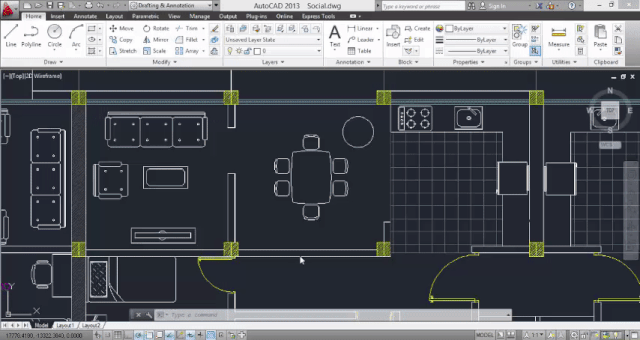
Creates a radius dimension for circles and arcs. Not to be confused with DIMANGULAR and DIMBASELINE.
Edits the text location of existing dimensions.
Creates a three-dimensional polygonal mesh.
Breaks up an object or block into each of its individual components. Before using, make sure you’re on the right layer.
Displays the coordinates of any point on the worksheet.
Manage lights and lighting effects on 3D models. You will most likely be prompted to change the viewport, or turn off the default lighting.
Create, organize, and select line types.
Import and export materials from and to a library.
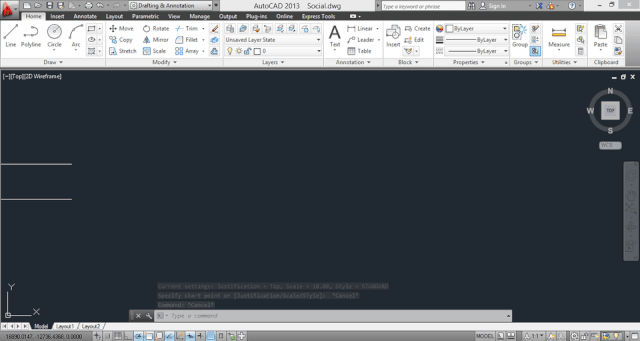
Creates multiple parallel lines.
Edit multiple parallel lines.
Repeats the next command until you cancel (Esc)
Sets up the layout of a drawing.
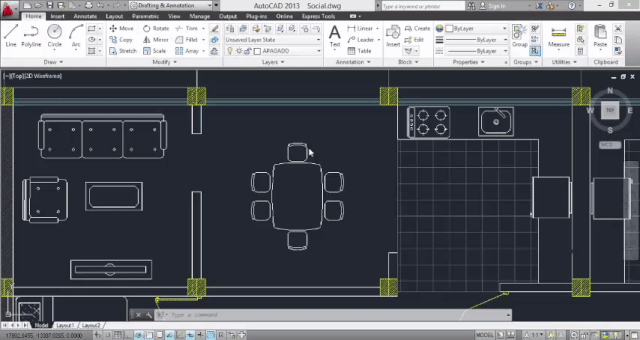
Restores the most recently deleted items. Its advantage over U is that you can use it after using BLOCK (or WBLOCK, export selected items to a new .DWG file), because those commands can delete selected objects after creating a block.
Unfortunately, you can’t use OOPS after PURGE.
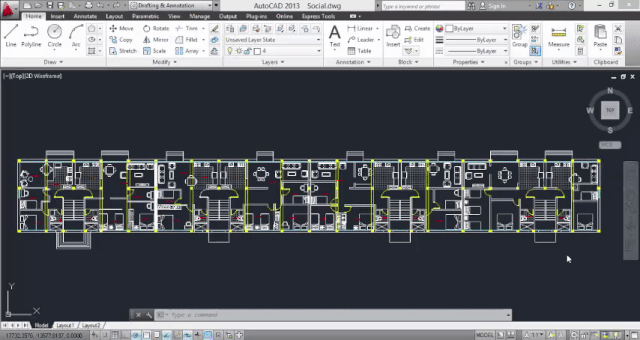
Cleans up your drawings. It goes over your entire model and deletes any duplicate or overlapping items. An incredible help for those who are obsessed with order and clarity in planimetry.
Specifies the page layout, plus the plotting device, paper size, and other settings for each new layout.
Creates a 3D mesh vertex by vertex.
Shows how the drawing will look when printed or sent to a plotter. Before you do this, you need to have configured the layout of the page (PAGESTEUP).
Remove unused objects in the drawing you are working on, through a series of filters: blocks, layers, materials, thickness of lines, texts, among others.
Quickly creates a dimension, after selecting objects.
Quickly creates a leader, and a leader annotation.
Autosave the file. Very useful when AutoCAD stops working and you’ve gone hours without saving any work. If you haven’t named the file yet, it’s the same as SAVEAS.
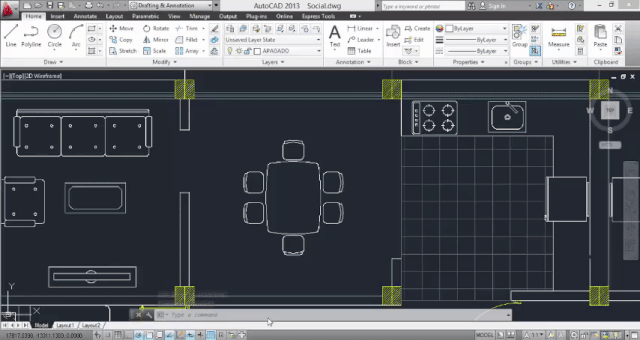
Quickly select objects according to a list of available filters: colors, line type and layers, among others.
Recovers a damaged file.
Creates a render of the model you're working on.
Creates revolved solids (3D) by rotating 2D objects around a user-defined axis.
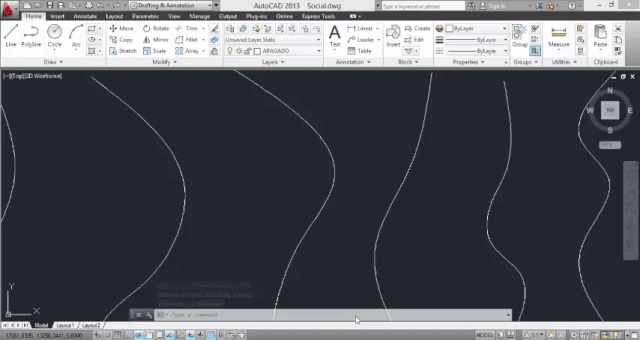
Creates a surface that joins two curves previously defined by the user.
Automatically saves all drawings you are working on.
Displays a set of information for a selected object, including line thickness, color, dimensions, radius, and area.
Create a series of freehand drawing segments.
Checks the spelling in texts using the language settings from your operating system, not AutoCAD.
Creates a region from a solid, surface, or region by subtraction.
Calibrates and configures a tablet or Wacom.
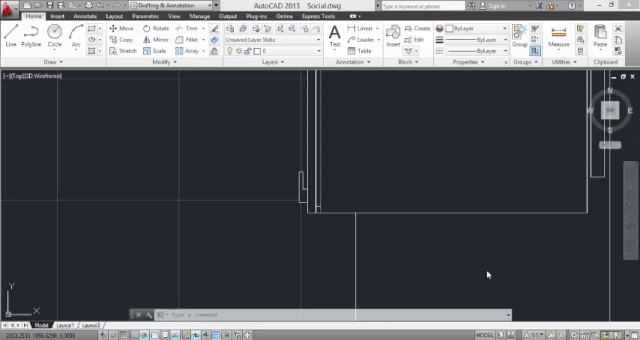
Displays a statistics table of the file you are working on: creation date, last update, and edit time. If you’re interrupted, you can activate / deactivate the stopwatch.
The same as Ctrl + Z, undoes the most recent operation.
Deletes an AutoCAD command, even this one. If you want to reverse your decision, REDEFINE.
Manages AutoCad windows for 2D and 3D models.
Creates an infinite line.
Export a file compatible with 3D Studio (.3ds format).
Created using information from Autodesk Knowledge Network.


0 comments